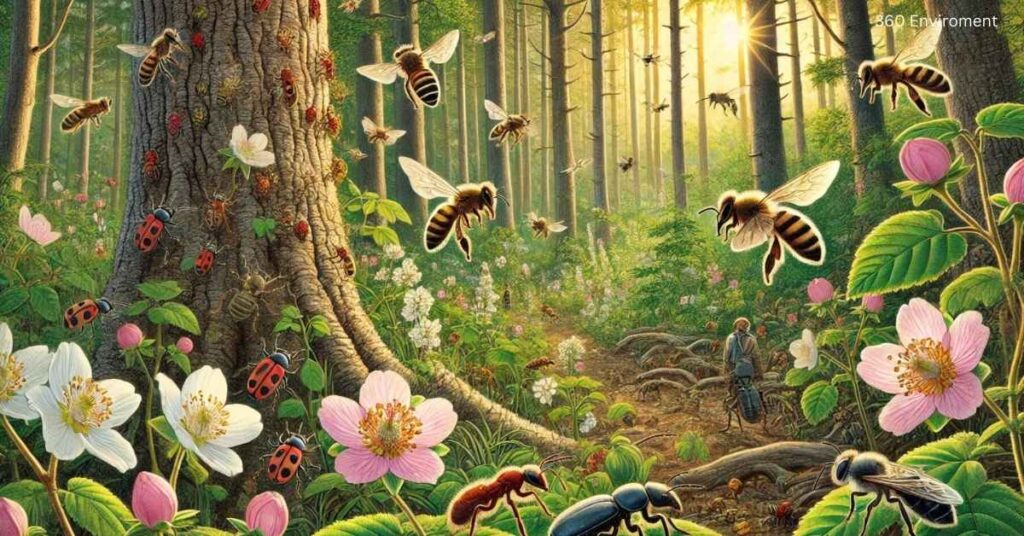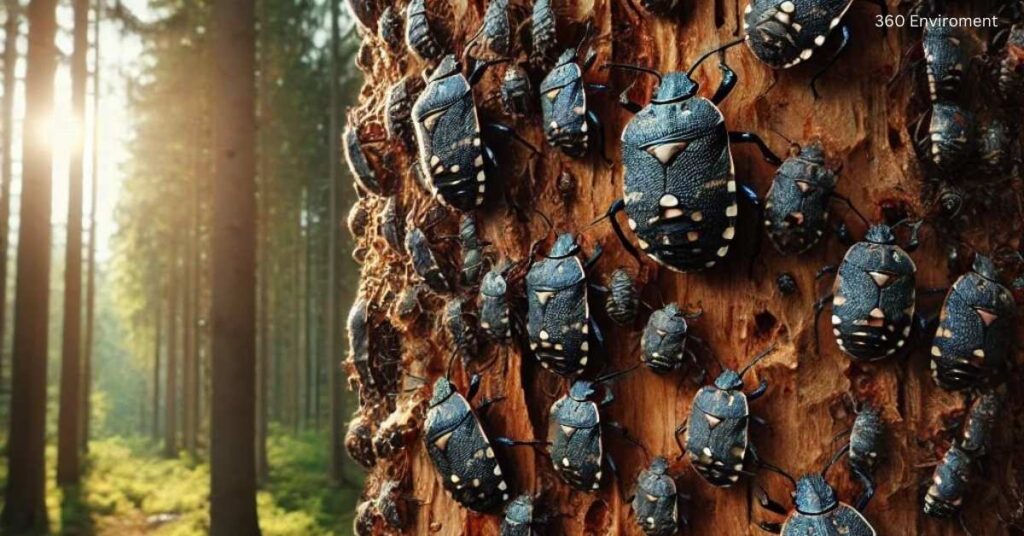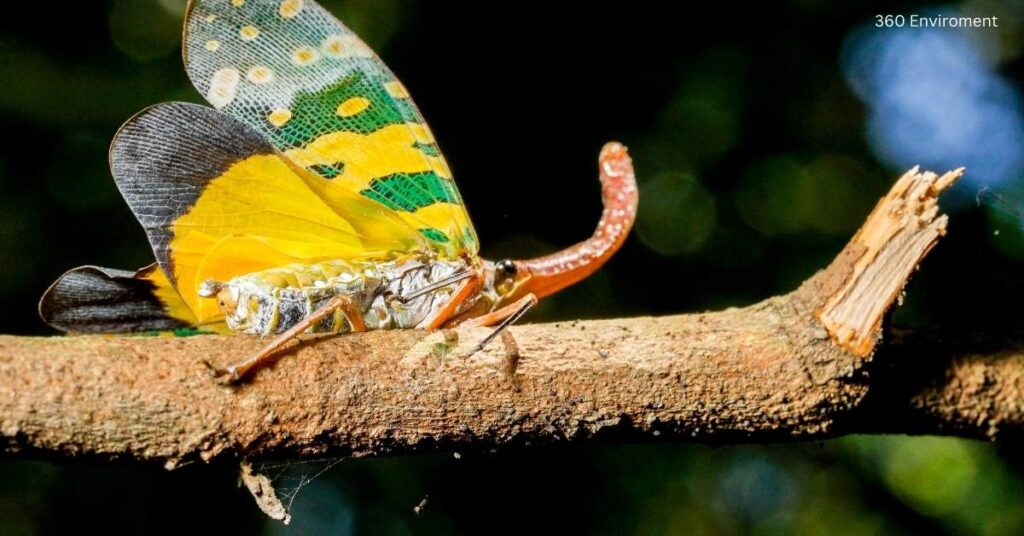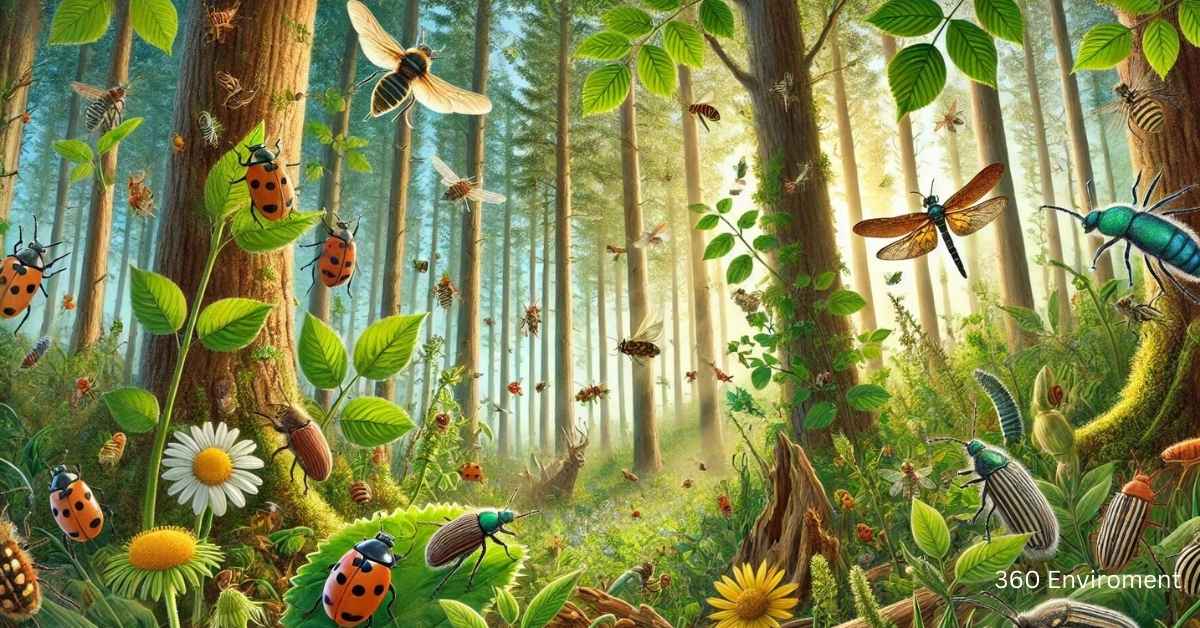Tree bugs are a diverse group of insects that play various roles in forest ecosystems. Some are beneficial to trees, aiding in pollination or controlling other harmful pests, while others can be harmful, damaging trees by feeding on sap, leaves, or wood. Understanding tree bugs, their ecological role, and how to manage them sustainably is crucial for maintaining healthy forests and urban landscapes.
In this article, we will explore various types of tree bugs, their environmental significance, how they interact with trees, and the sustainable methods available to manage harmful species while promoting biodiversity and ecosystem balance.
1. The Importance of Tree Bugs in Forest Ecosystems
Tree bugs, or insects associated with trees, include a wide variety of species from several families, such as beetles, aphids, cicadas, and more. These bugs are an essential part of forest ecosystems, as they fulfill roles that range from pollination and decomposition to predation and herbivory.

1.1 Pollinators and Seed Dispersers
Certain tree bugs contribute to the reproductive success of trees by aiding in pollination or seed dispersal. Beetles, for example, are important pollinators for many tree species. By carrying pollen from flower to flower, they help ensure genetic diversity and fruit production in tree species such as magnolias and pawpaws.
Ants, while often overlooked, also play a role in seed dispersal, particularly for trees that produce seeds with nutrient-rich appendages, known as elaiosomes. These insects collect the seeds, carry them back to their nests, and often abandon them, allowing the seeds to germinate in new locations.
1.2 Decomposers and Nutrient Recyclers
Several tree bugs contribute to the decomposition process. Wood-boring beetles, such as the emerald ash borer, play a dual role. While they can cause damage by boring into trees, they also help in breaking down dead and dying trees. The tunnels these insects create allow fungi and other decomposers to enter, accelerating the decay process and returning nutrients to the soil.
Termites and carpenter ants are also significant decomposers in forests. While they can be problematic in human structures, they break down deadwood in forested environments, contributing to the cycle of nutrients essential for forest health.
1.3 Predators and Pest Control
Beneficial tree bugs also include natural predators that keep harmful insect populations in check. Ladybugs (or ladybird beetles) are effective predators of aphids, which are common pests that feed on the sap of tree leaves. Similarly, lacewings and praying mantises feed on a wide variety of insects, acting as natural pest control agents.
By maintaining a balance between predatory and herbivorous bugs, forests can remain healthy, as pest populations are naturally kept in check, preventing outbreaks that could lead to significant tree damage.
2. Harmful Tree Bugs: A Threat to Forest Health
Despite the many beneficial roles tree bugs play, certain species pose a serious threat to the health of trees and entire forest ecosystems. Some of the most well-known harmful tree bugs include sap-sucking insects, defoliators, and wood-boring pests.

2.1 Sap-Sucking Insects
Sap-sucking insects feed on the nutrient-rich sap found in the leaves, branches, and stems of trees. Common sap-sucking insects include aphids, scale insects, spider mites, and whiteflies.
- Aphids are small, soft-bodied insects that extract sap from tree leaves. While an individual aphid is unlikely to cause significant damage, large infestations can lead to weakened trees, stunted growth, and even the death of young trees.
- Scale insects form protective coatings and are often found clustered on tree branches. They weaken trees by feeding on sap, leading to reduced vitality and eventual dieback of the affected limbs.
- Spider mites are tiny arachnids that also feed on plant sap, often leaving behind fine webbing on tree leaves and branches. Severe infestations can cause defoliation, and weakened trees may become more susceptible to other pests and diseases.
2.2 Defoliators
Defoliators are insects that feed on the leaves of trees, causing widespread damage, particularly in large infestations. Caterpillars, sawflies, and leaf beetles are some of the primary culprits.
- Gypsy moth caterpillars are notorious defoliators that target hardwood species like oaks, maples, and birches. They consume large quantities of leaves, weakening trees and leaving them more vulnerable to secondary infections.
- Forest tent caterpillars and eastern tent caterpillars also cause defoliation, creating web-like tents in tree branches and stripping trees of their foliage. While healthy trees can often recover, repeated defoliation events can lead to long-term damage or death.
- Leaf beetles, such as the elm leaf beetle, target the leaves of specific tree species, often leading to defoliation and a reduction in photosynthesis, which in turn stunts tree growth.
2.3 Wood-Boring Pests
Wood-boring pests are among the most damaging tree bugs because they attack the tree from within. Beetles, borers, and moths are common wood-boring insects that damage trees by tunneling through their bark and into the wood.
- Emerald ash borers are notorious for their destructive impact on ash trees. The larvae feed on the inner bark, disrupting the tree’s ability to transport water and nutrients, eventually killing the tree.
- Asian longhorned beetles burrow into hardwood trees like maples, poplars, and willows. The tunneling larvae weaken the structural integrity of the tree, leading to branch dieback and tree death if left uncontrolled.
- Bark beetles target coniferous trees like pine and spruce, and their rapid spread can result in large-scale die-offs, especially in areas already stressed by drought or climate change.
3. Ecological Impact of Tree Bugs
The interaction between tree bugs and trees is a complex web of beneficial and harmful effects. While some tree bugs aid in decomposition, nutrient recycling, and predation, harmful bugs can devastate forests, disrupting the balance of the ecosystem.

3.1 Forest Health and Biodiversity
Tree bugs play a significant role in maintaining biodiversity within forests. By contributing to nutrient cycling and providing food for birds, mammals, and other insects, they help sustain the intricate food web that defines healthy forest ecosystems. Predatory tree bugs help maintain this balance by controlling the populations of herbivorous insects that could otherwise become destructive.
However, when harmful tree bugs invade an ecosystem, they can threaten the health of entire forests. Invasive species such as the emerald ash borer or the Asian longhorned beetle have no natural predators in their introduced environments, allowing them to spread unchecked and cause widespread destruction.
The loss of trees to invasive species can also lead to cascading effects in the ecosystem. For example, when ash trees die due to the emerald ash borer, the species that rely on those trees for food, shelter, or nesting sites are also impacted. This loss of biodiversity can reduce the overall resilience of the forest, making it more vulnerable to other environmental stressors such as climate change, disease, or further pest infestations.
3.2 Climate Change and Pest Outbreaks
Climate change is altering the distribution and behavior of many tree bugs, leading to increased pest outbreaks in some regions. Warmer temperatures and longer growing seasons allow for the faster reproduction of certain pests, increasing the likelihood of large-scale infestations.
For example, warmer winters have allowed the mountain pine beetle to expand its range in North America, attacking previously unaffected areas. Similarly, milder winters in Europe have contributed to the spread of oak processionary caterpillars, which pose a threat to oak trees and human health due to their toxic hairs.
The interaction between climate change and tree bugs creates a vicious cycle. As trees become stressed by changing environmental conditions, they become more susceptible to pest infestations. In turn, pest outbreaks can weaken forests, reducing their ability to sequester carbon and mitigate climate change. This feedback loop underscores the importance of understanding and managing tree bugs in the context of a rapidly changing climate.
4. Sustainable Management of Tree Bugs
Managing tree bugs sustainably is essential to preserving forest health, biodiversity, and ecosystem function. Sustainable pest management practices aim to balance the need to control harmful insects with the goal of minimizing the impact on the environment and non-target species.

4.1 Integrated Pest Management (IPM)
Integrated Pest Management (IPM) is a holistic approach to pest control that combines biological, cultural, mechanical, and chemical methods to manage pests in a sustainable way. The key principles of IPM include:
- Monitoring and Identification: Regular monitoring of trees for signs of pest infestations allows for early detection and targeted interventions. Correctly identifying the pest species is crucial for selecting the most appropriate control methods.
- Biological Control: Natural predators, parasites, and pathogens can be used to control pest populations. For example, releasing ladybugs or parasitic wasps can help reduce aphid infestations. Fungi and bacteria can also be used to target specific pests without harming other insects or wildlife.
- Cultural Practices: Modifying the environment to make it less hospitable to pests is another key component of IPM. This can include practices such as pruning infected branches, improving tree health through proper watering and fertilization, and selecting pest-resistant tree species for planting.
- Mechanical Control: Physical methods such as trapping, hand-picking, or using barriers can be effective in managing certain tree bugs. For example, sticky bands placed around tree trunks can prevent caterpillars from climbing into the canopy to feed.
- Chemical Control: Chemical pesticides should be used as a last resort and applied in a targeted manner to minimize harm to beneficial insects, wildlife, and the environment. Selecting environmentally friendly pesticides and applying them at the right time of year can help reduce their impact.
4.2 Conservation and Biodiversity
Promoting biodiversity in forests is one of the best ways to manage tree bug populations sustainably. Diverse ecosystems are more resilient to pest outbreaks because they contain a wider variety of predators, parasites, and other natural controls that help keep harmful insect populations in check.
By planting a variety of tree species and maintaining a mix of tree ages and structures in both forests and urban landscapes, we can create habitats that support a wide range of beneficial insects and reduce the likelihood of pest outbreaks.
Conclusion
Tree bugs, though often seen as pests, play a vital role in forest ecosystems. Their ecological functions include pollination, nutrient recycling, and pest control, making them indispensable to the health of our forests. However, certain harmful species, particularly invasive ones, pose a serious threat to tree health and biodiversity.
Sustainable management of tree bugs through methods such as Integrated Pest Management (IPM) and conservation-focused practices can help strike a balance between preserving the beneficial roles of these insects while mitigating their harmful impacts. As climate change continues to alter the dynamics of pest populations, understanding and managing tree bugs will become even more important in protecting our forests for future generations.
Read More: Wind Shake in Oak: Understanding Its Causes and Impacts

